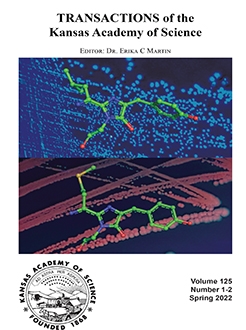The glaciation of northeastern Kansas has attracted scientific attention since the mid-19th century and has played a conspicuous role for glacial stratigraphy and chronology. Since the 1990s, many studies have been conducted in Kansas, other mid-western states, and elsewhere around the world that shed additional light on the glaciation of Kansas as well as its global role. All glacial and glacially related deposits in northeastern Kansas are designated as the Independence Formation with an age range in the interval approximately 810,000 to 640,000 years ago corresponding to MIS 20-16 (latest Matuyama - early Brunhes chrons).
The Independence Glaciation took place as two, large ice lobes - Minnesota and Dakota, which are interpreted as low-profile ice masses that were quite thin at their margins and advanced by surging over thawed or deformable beds. The Independence Glaciation corresponds in part with the Don Glaciation in Europe and to MIS 16, which is appropriately one of the greatest glacial phases in the entire Pleistocene Epoch. The Independence and Don glaciations represent the farthest southward expansions into their respective continental interiors.





